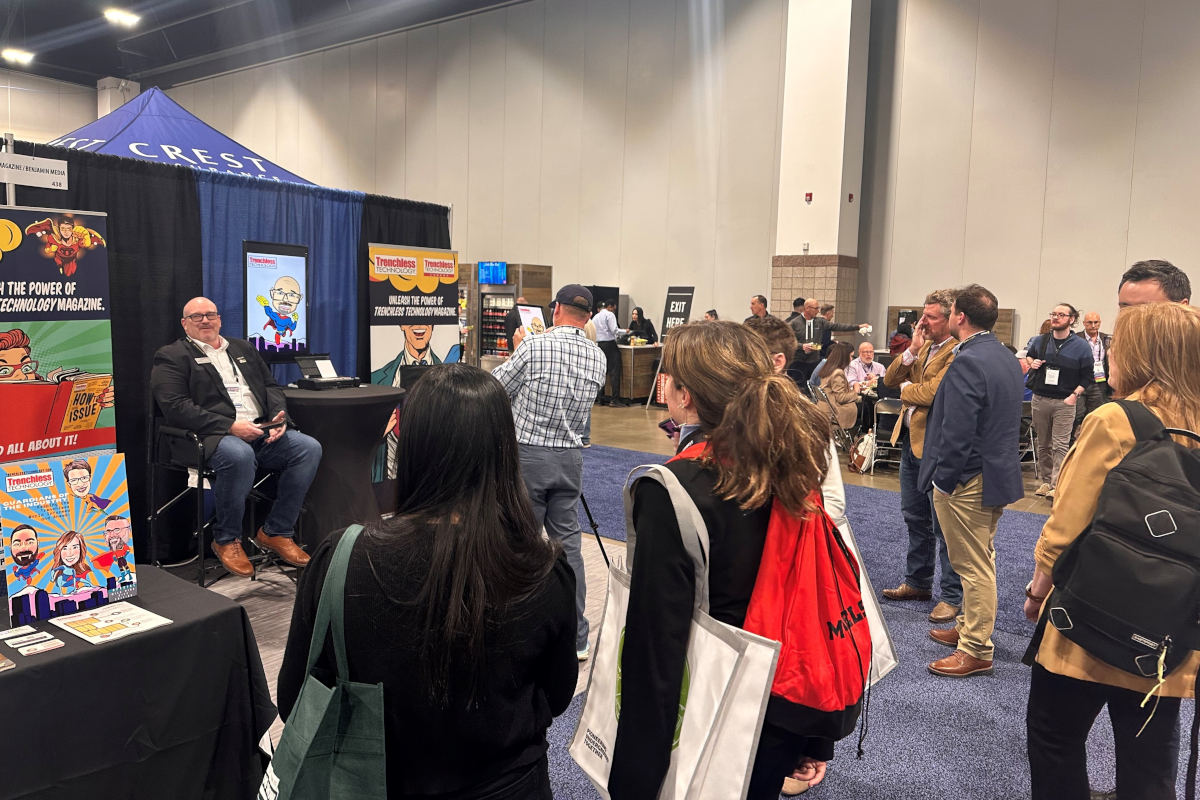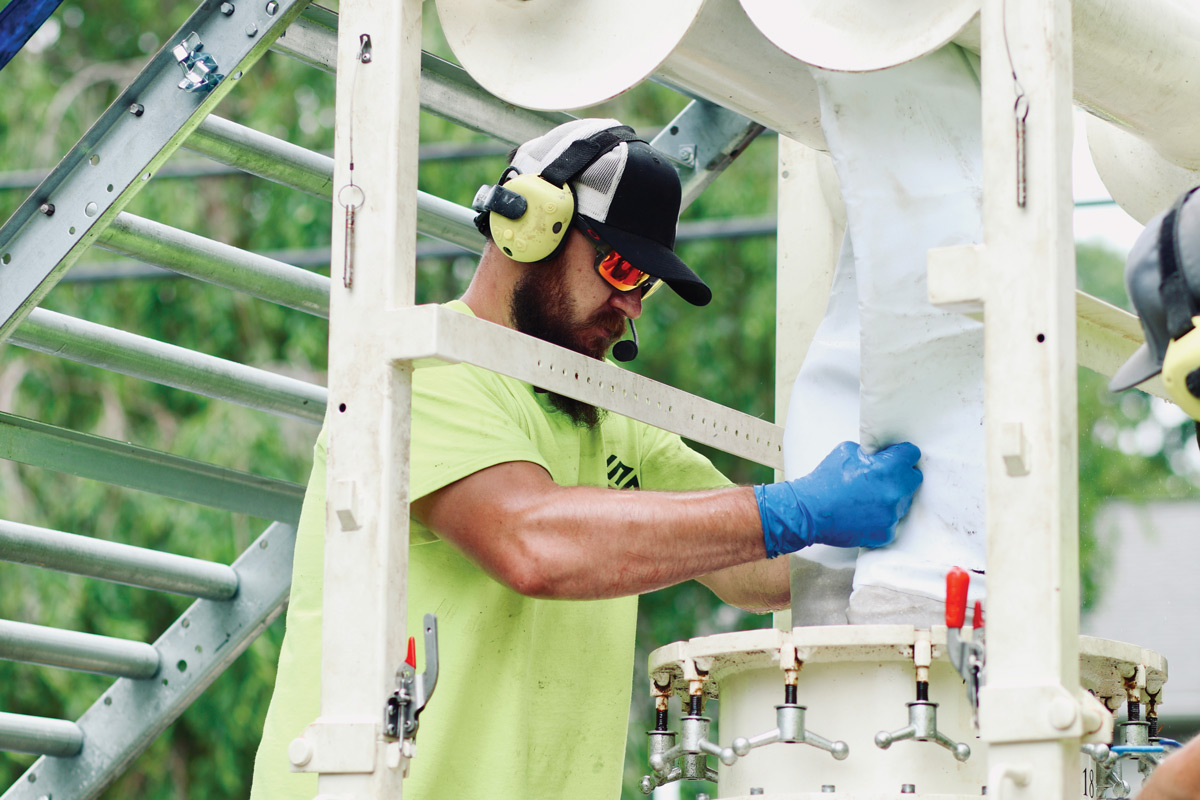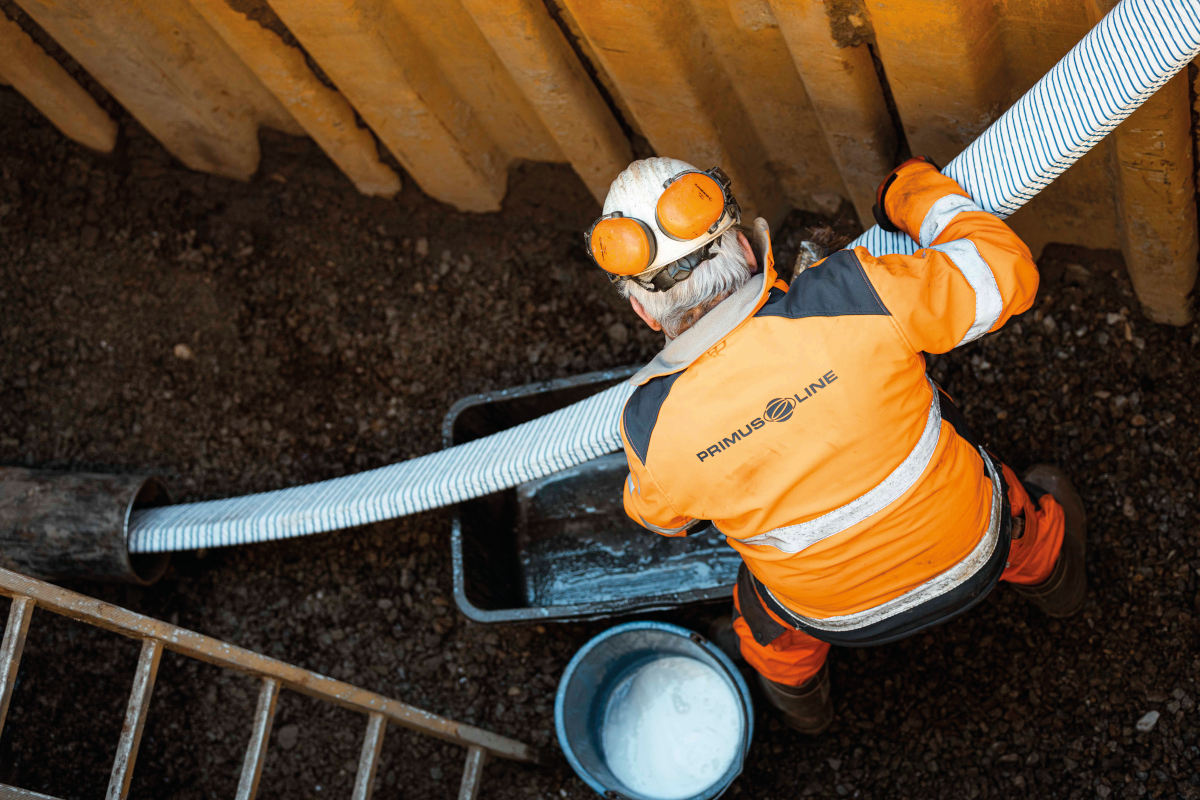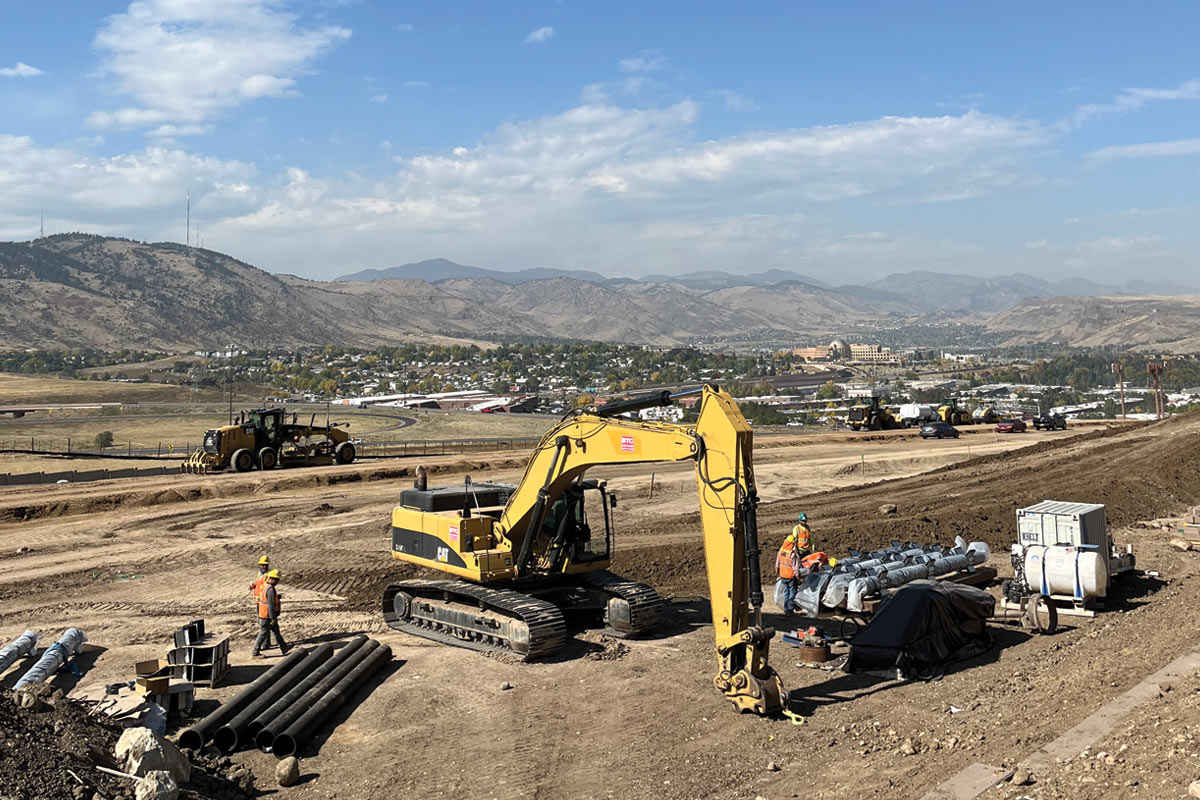
Auger Boring in Golden, Colorado
Obstructions Can’t Deter the BT Construction Team
BT Construction (BT) was awarded a subcontract in the Summer 2024 to construct two GBM-auger boring trenchless installations in Golden, Colorado. The grade-critical installations will provide a new water mainline system. It will connect an existing neighborhood to the new subdivision known as the Golden Overlook Development in Jefferson County.
New Home CO is the developer. They selected Premier Earthworks and Infrastructure as the general contractor. BT was awarded both bores by Premier Earthworks and Infrastructure to kick off the schedule for the second phase of the project. This phase involved making sure all the underground utilities were connected and the foundations were ready to be built for the new homes.
The two waterline bores include crossings under multiple utilities. These include gas, telephone, fiber, and electric lines. The casing material chosen was bare coated steel. The depth to the top of the pipe ranged from 12 to 16 ft. The soil borings taken along the pipe alignment indicated the water table would be below the top of the pipe at each crossing. There was a mix of dense sand, gravel, and stiff silty clay on each bore alignment. BT used a GBM auger bore method at each of the bores. This decision followed a thorough analysis of the geotech reports, as we needed to add a significant level of accuracy while navigating through these existing soil conditions. The specific model used for the project was the American Auger 36-600 series, with an Akkerman 240A GBM attachment.
Archers Way
BT mobilized to the first bore location, which was designed as 170 lf long with a 24-in. casing and an 8-in. ductile iron carrier pipe. This bore path went between two large, beautiful homes. It had about seven utilities running directly through their backyard. Our bore path was going to split between the two houses, following along the property line of each. Our plan was to launch from the downhill side and drive the bore uphill. We had to maintain proper clearance from existing utilities and encounter different soil pockets at every major elevation change.
Our team re-evaluated the soil conditions after pushing the GBM pilot tube through our first proposed alignment. After further review, it appeared the soil was not displacing well. We noticed this because the GBM rods took an abnormal amount of time to push through the soil and started putting a lot of strain on our equipment. Time for Plan B: We decided as a team to utilize another unique tool known as a Guided Rod Swivel. This tool helps allow for the retraction of our auger flights and head. It also gives us the ability to attach to a needle or pocket attachment. The needle or pocket attachment allows direct connection to a cutting head of various sizes. This entire attachment is essentially a small cutting head. It is attached at the front of the casing and uses the pilot tube to spin the cutting head during advancement, helping the soil break apart to ensure proper advancement.
Once we made the decision to switch to the Guided Rod Swivel, we quickly realized it had worked flawlessly. It was able to help advance the casing a little smoother than the original attempt with the GBM pilot tube. BT completed this bore a week ahead of schedule and was completed on-line and grade.
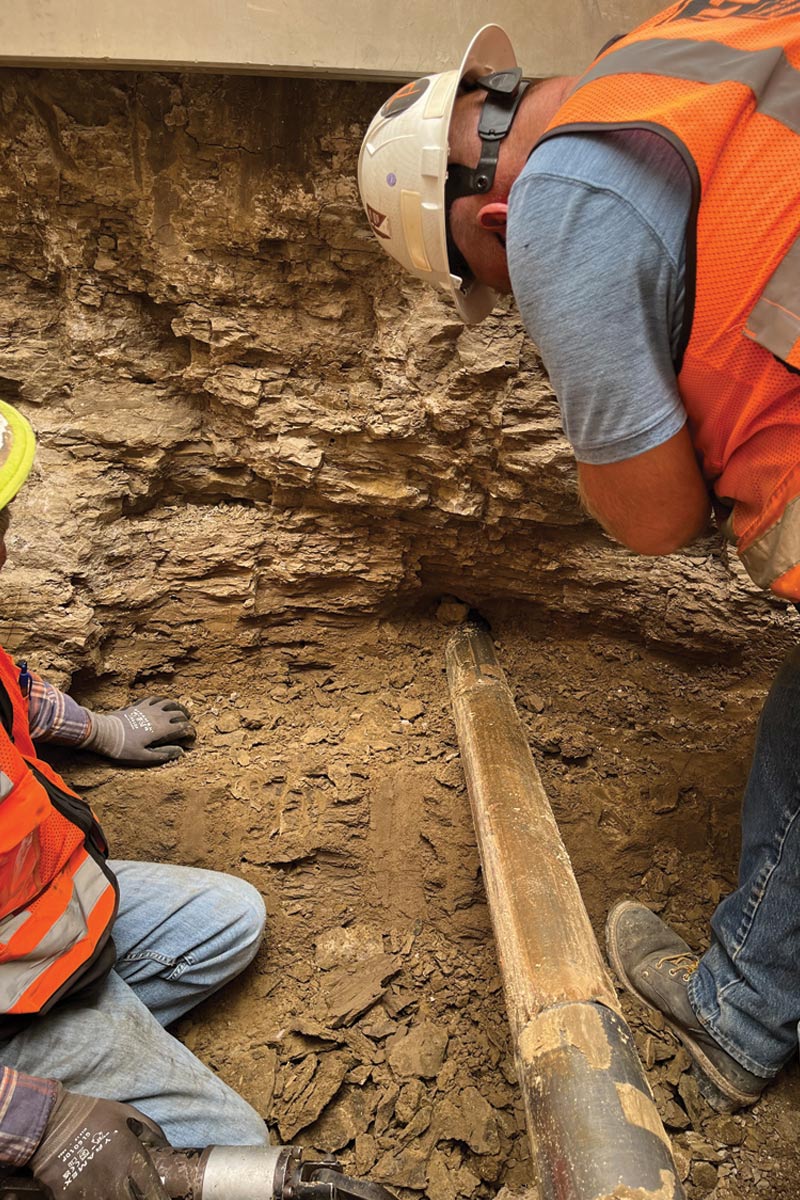
Rodgers Way
The second bore location was about 1,000 ft to the south. It was designed as 185 lf of 30-in. steel casing with a 12-in. ductile iron carrier pipe. This particular bore also split in between two large houses, with the bore path running directly underneath an existing bike path. It ran parallel to an 8-in. high pressure gas line. Due to the unfavorable ground conditions at this location, BT elected to also use a GBM-auger bore method. The GBM pilot tube was an important factor in helping us understand our first pass through the gravely and rocky soil conditions.
Once the homeowners were contacted and foundations inspections completed, our high pressure gas line inspector was scheduled. We started pushing our pilot tubes on the alignment. About 40 ft into advancement, the bore machine came to a halt and lost our line of sight. We pulled our rods backward to see what was causing such stress on our machine, as it was still unclear. Next, we prepared for another attempt and this time made it past the unknown obstruction and re-obtained our line of sight. This happened again at 70 ft, 80 ft, and once more at 165 ft. My foreman explained the encounters as comparable to being at the beach, taking a 3-in. nail and pushing it slowly into the sand while hitting rocks and skipping off them as you push forward. This similar situation is how a good boring operator reacts in these situations, as the operator can feel these jolts and halts from the machine all the way through their body.
Once we hit our last obstruction at 165 ft, there was no amount of retracting rods and re-advancing that was going to fix our situation. It became clear that we were at a dead stop. Our team had to react quickly, and, at 3:15 p.m. on a Thursday, we had two options. One of those options was to deal with it in the morning. The other was to get the right size equipment to dig and retrieve this boulder.
The gas line inspector double-checked our distance from the gas line. They gave us approval to proceed with carefully digging down to expose our pilot tube. The general contractor was able to come to our aid. Within minutes, a CAT 325 Excavator was parked on the closed bike path. The bucket was in the ground starting to dig and find our GBM pilot tube. At about 4:20 p.m., our pilot tube was located. Along with it came a 2.5-ft x 2.75-ft boulder directly in front of it. The boulder was carefully retrieved, and the hole was backfilled by 5:30 p.m. that night.
The next morning, we were able to complete our pilot tube advancement to the other side. We were fortunate not to hit any additional boulders for the last remaining 25 ft. The ability to dig next to the gas line for this section was not permitted by the inspector for the general safety of our crew.
All in all, BT completed these bores on schedule and on-line and grade, even with all the added struggles along the way. This bore will always be memorable, as it took a lot of extra coordination with some added surprises. BT was able to successfully switch methods on both bores, utilizing the Guided Rod Swivel and removing obstructions from our bore path. The GC was now able to start the next step of tying in the final loop of the waterlines a week ahead of schedule. The GC and developer were pleased and congratulated BT on our successful yet difficult path to the finish line.
Quinton Myotte is project manager at BT Construction.


